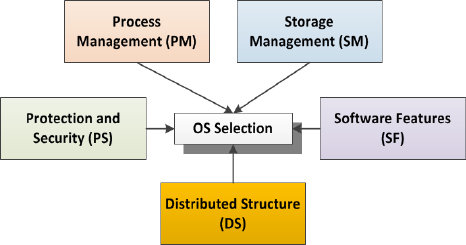
Operating systems (OS) have evolved and can vary widely in terms of features based on their type (desktop, mobile, server, real-time, etc.) and purpose. Here are some common features found in modern operating systems:
1. User Interface (UI):
The interface through which users interact with the computer, including graphical user interfaces (GUI) and command-line interfaces (CLI).
2. Multitasking:
The ability to run multiple programs or processes concurrently, allows users to switch between them seamlessly.
3. Multithreading:
Supporting multiple threads within a single process, enabling better utilization of CPU resources for parallel execution.
4. Memory Management:
Allocating and managing system memory for processes, ensuring efficient utilization, and preventing conflicts.
5. File System Management:
Managing files, directories, and storage devices, including functionalities like file creation, deletion, copying, and organizing.
6. Device Management:
Controlling and interacting with hardware devices such as printers, scanners, monitors, and input/output devices.
7. Security and Access Control:
Implementing user authentication, authorization, and data protection mechanisms to ensure the security of the system and user data.
8. Networking:
Enabling communication between computers and devices over networks, including features like TCP/IP protocol support, network configuration, and firewall management.
9. Virtualization:
Allowing multiple operating systems to run on a single physical machine (virtualization) or dividing a single instance of an OS into multiple isolated virtual environments (containers).
10. Power Management:
Optimizing power consumption by managing CPU clock speed, screen brightness, and sleep/hibernation modes.
11. Backup and Recovery:
Facilitating data backup, restoration, and disaster recovery to protect against data loss.
12. Updates and Patches:
Providing mechanisms to update and patch the OS and applications to address security vulnerabilities and improve functionality.
13. Compatibility and APIs:
Supporting application compatibility through application programming interfaces (APIs) and libraries.
14. System Monitoring and Diagnostics:
Offering tools to monitor system performance, diagnose issues, and troubleshoot problems.
15. Localization and Internationalization:
Supporting different languages, character sets, and regional settings to cater to a global user base.
16. User Account Management:
Creating, modifying, and managing user accounts with different levels of access and privileges.
17. Shell and Scripting:
Providing a command-line interface (shell) and scripting capabilities for automating tasks and system management.
18. Scheduling:
Optimally allocating CPU time to processes and tasks based on priority and scheduling algorithms.
19. Graphical Subsystem:
Managing the display, graphics rendering, and user interaction with graphical elements.
20. System Services:
Offering essential services like timekeeping, event logging, and error handling.
21. Real-time Support:
Providing deterministic response times for time-sensitive applications in real-time operating systems.
It’s important to note that the features available in an operating system can vary depending on the specific version, platform, and purpose of the OS. Different operating systems may prioritize certain features over others based on their intended use cases.
